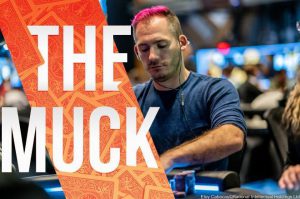According to this article’s thesis, winning requires a basic talent. In cash games, this skill is folding aces after the flop. Tournaments are different, yet same notion applies to them too.
So why is it vital to know when to fold “bullets” (pocket aces) after the flop?
Everyone knows that pocket aces are the strongest hole cards, but what’s astonishing is that they’re also the strongest hand. They’re the best.
How strong are pocket aces?
A-A, K-K, Q-Q, and A-K suited are the four strongest hands in no-limit hold’em. Consider the chance of each winning versus a random hand to assess their relative strength. The odds of winning for these four hands are 85%, 82%, 80%, and 67%. Top pairings have a nearly equal chance of winning under this method.
Pocket aces are unbeatable preflop.
We will examine the same likelihood of winning if the opponent plays only strong hands, such as (6-6+, A-Q+, suited A-J, K-Q). 16 strongest hands are chosen (yes, we understand that this number can vary from player to player).
The winning probabilities are 84%, 73%, 64%, and 54%. Pocket aces still hold the edge, while the rest of the hands have much lower odds.
Pocket kings’ odds of winning versus cards in this range are 73% and 84%, similar to aces’. Kings only have an 18% probability of victory if they confront aces head-to-head. So, pre-flop pocket aces in no-limit hold’em are unmatched.
Pocket aces are uncommon. Are they droppable?
Pocket aces appear every 221 hands. I’m not alone in thinking it’s an eternity for players like myself who can’t sit still. So when we see pocket aces, we lick our lips nervously. We expect a lot and are willing to kill. Change them? Are you kidding?
Profitability and average win rate of pocket pairs
Perhaps you know the average win rate (WR). The average win rate is measured in big blinds per 100 hands. If this player is at an NL100 table, it’s $1 per 100 hands.
Calculating the profitability of all conceivable hole cards is a fascinating statistical approach used in Texas Hold’em player databases. This takes into consideration average winnings. 13 pocket pairs are considered. High pairings get first since their average win rate surpasses 100 large blinds every 100 hands. Consequently, from A-A to 2-2, the projected average win rate declines.
For couples under 6-6, the average win rate is negative.
The average pair victory rate gets negative at 6-6, generally. From 5-5 to 2-2, every pocket pair has a negative anticipated payoff. ы
For all poker players—strong, weak, and freaks—the pair win rate declines. Because 4-4 is so easy to beat, even the greatest pros can’t make money with it for long.
Due to this diminishing victory percentage, Q-Q will always make more money than J-J, regardless of talent. Pocket aces are the strongest hand and always win.
Everyone can win with pocket aces.
Even the weakest loose players never lose money with pocket aces in the long run. As aces may take care of themselves, this assumes players don’t think about playing them appropriately. Even poorly played pocket aces earn money. Pocket aces are a winning hand for all players.
Due to the huge implied victory for pocket aces, if you have bullets, close your eyes and go all-in or raise all-in. That’s right. If your aces are down, it’s terrible luck and you can’t do anything about it. This divides great players from everyone else. You can obtain above-average performance with pocket aces if you can fold AA after the flop.
Pocket Ace





